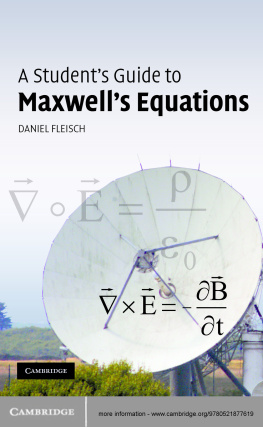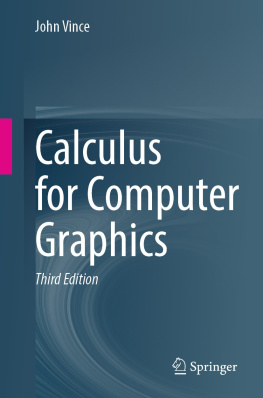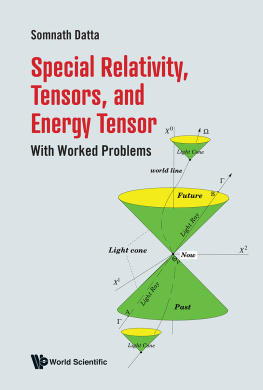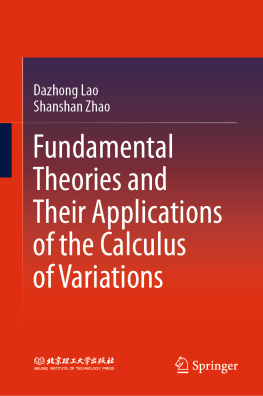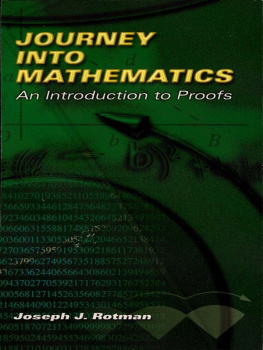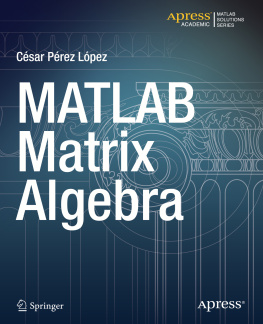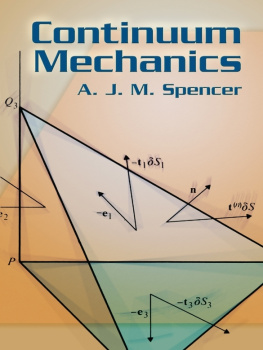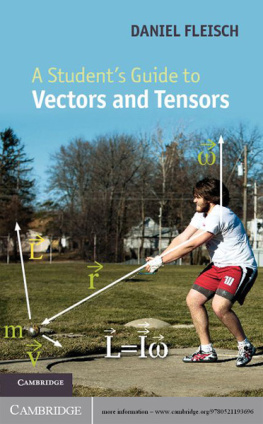A Students Guide to Maxwells Equations
Maxwells Equations are four of the most influential equations in science: Gausss law for electric fields, Gausss law for magnetic fields, Faradays law, and the AmpereMaxwell law. In this guide for students, each equation is the subject of an entire chapter, with detailed, plain-language explanations of the physical meaning of each symbol in the equation, for both the integral and differential forms. The final chapter shows how Maxwells Equations may be combined to produce the wave equation, the basis for the electromagnetic theory of light.
This book is a wonderful resource for undergraduate and graduate courses in electromagnetism and electromagnetics. A website hosted by the author, and available through www.cambridge.org/9780521877619, contains interactive solutions to every problem in the text. Entire solutions can be viewed immediately, or a series of hints can be given to guide the student to the final answer. The website also contains audio podcasts which walk students through each chapter, pointing out important details and explaining key concepts.
Daniel Fleisch is Associate Professor in the Department of Physics at Wittenberg University, Ohio. His research interests include radar cross-section measurement, radar system analysis, and ground-penetrating radar. He is a member of the American Physical Society (APS), the American Association of Physics Teachers (AAPT), and the Institute of Electrical and Electronics Engineers (IEEE).
CAMBRIDGE UNIVERSITY PRESS
Cambridge, New York, Melbourne, Madrid, Cape Town, Singapore, So Paulo
Cambridge University Press
The Edinburgh Building, Cambridge CB2 8RU, UK
Published in the United States of America by Cambridge University Press, New York
www.cambridge.org
Information on this title: www.cambridge.org/9780521877619
D. Fleisch 2008
This publication is in copyright. Subject to statutory exception and to the provisions of relevant collective licensing agreements, no reproduction of any part may take place without the written permission of Cambridge University Press.
First published 2008
Printed in the United Kingdom at the University Press, Cambridge
A catalogue record for this publication is available from the British Library
Library of Congress Cataloging in Publication Data
Fleisch, Daniel A.
A Students guide to Maxwells equations / Daniel Fleisch.
p. cm.
Includes bibliographical references and index.
ISBN 978-0-521-87761-9 (hardback : alk. paper) ISBN 978-0-521-70147-1
(pbk. : alk. paper)
1. Maxwell equations. I. Title.
QC670.F56 2007
530.141dc22
2007037901
ISBN 978-0-521-87761-9 hardback
ISBN 978-0-521-70147-1 paperback
Cambridge University Press has no responsibility for the persistence or accuracy of URLs for external or third-party internet websites referred to in this publication, and does not guarantee that any content on such websites is, or will remain, accurate or appropriate.
Preface
This book has one purpose: to help you understand four of the most influential equations in all of science. If you need a testament to the power of Maxwells Equations, look around you radio, television, radar, wireless Internet access, and Bluetooth technology are a few examples of contemporary technology rooted in electromagnetic field theory. Little wonder that the readers of Physics World selected Maxwells Equations as the most important equations of all time.
How is this book different from the dozens of other texts on electricity and magnetism? Most importantly, the focus is exclusively on Maxwells Equations, which means you wont have to wade through hundreds of pages of related topics to get to the essential concepts. This leaves room for in-depth explanations of the most relevant features, such as the difference between charge-based and induced electric fields, the physical meaning of divergence and curl, and the usefulness of both the integral and differential forms of each equation.
Youll also find the presentation to be very different from that of other books. Each chapter begins with an expanded view of one of Maxwells Equations, in which the meaning of each term is clearly called out. If youve already studied Maxwells Equations and youre just looking for a quick review, these expanded views may be all you need. But if youre a bit unclear on any aspect of Maxwells Equations, youll find a detailed explanation of every symbol (including the mathematical operators) in the sections following each expanded view. So if youre not sure of the meaning of in Gausss Law or why it is only the enclosed currents that contribute to the circulation of the magnetic field, youll want to read those sections.
As a students guide, this book comes with two additional resources designed to help you understand and apply Maxwells Equations: an interactive website and a series of audio podcasts. On the website, youll find the complete solution to every problem presented in the text in interactive format which means that youll be able to view the entire solution at once, or ask for a series of helpful hints that will guide you to the final answer. And if youre the kind of learner who benefits from hearing spoken words rather than just reading text, the audio podcasts are for you. These MP3 files walk you through each chapter of the book, pointing out important details and providing further explanations of key concepts.
Is this book right for you? It is if youre a science or engineering student who has encountered Maxwells Equations in one of your textbooks, but youre unsure of exactly what they mean or how to use them. In that case, you should read the book, listen to the accompanying podcasts, and work through the examples and problems before taking a standardized test such as the Graduate Record Exam. Alternatively, if youre a graduate student reviewing for your comprehensive exams, this book and the supplemental materials will help you prepare.
And if youre neither an undergraduate nor a graduate science student, but a curious young person or a lifelong learner who wants to know more about electric and magnetic fields, this book will introduce you to the four equations that are the basis for much of the technology you use every day.
The explanations in this book are written in an informal style in which mathematical rigor is maintained only insofar as it doesnt get in the way of understanding the physics behind Maxwells Equations. Youll find plenty of physical analogies for example, comparison of the flux of electric and magnetic fields to the flow of a physical fluid. James Clerk Maxwell was especially keen on this way of thinking, and he was careful to point out that analogies are useful not because the quantities are alike but because of the corresponding relationships between quantities . So although nothing is actually flowing in a static electric field, youre likely to find the analogy between a faucet (as a source of fluid flow) and positive electric charge (as the source of electric field lines) very helpful in understanding the nature of the electrostatic field.
One final note about the four Maxwells Equations presented in this book: it may surprise you to learn that when Maxwell worked out his theory of electromagnetism, he ended up with not four but twenty equations that describe the behavior of electric and magnetic fields. It was Oliver Heaviside in Great Britain and Heinrich Hertz in Germany who combined and simplified Maxwells Equations into four equations in the two decades after Maxwells death. Today we call these four equations Gausss law for electric fields, Gausss law for magnetic fields, Faradays law, and the AmpereMaxwell law. Since these four laws are now widely defined as Maxwells Equations, they are the ones youll find explained in the book.

